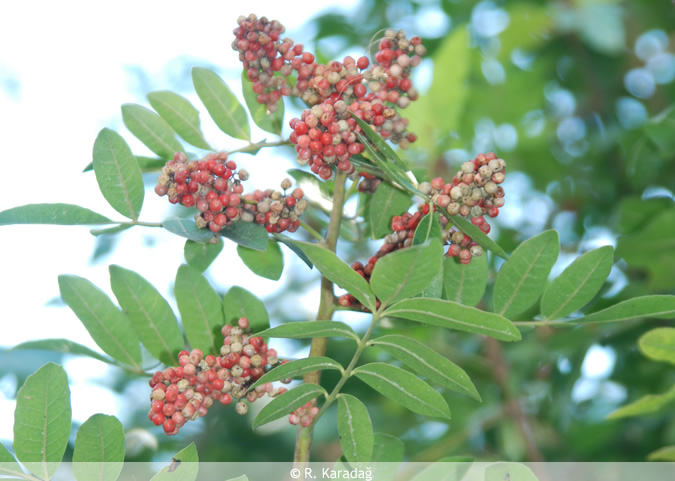The up to 20-foot-high deciduous bush has opposite, lancet-shaped leaves and insignificant white to light red flowers. Henna is native to northern and eastern Africa, Madagascar , India , and the Sunda Islands . It prefers a hot climate and dry air. Henna is cultivated far beyond its original natural areas. Leaves dried and ground to a powder.
Historical Data
Henna has been known since ancient times as a dyestuff, but more for the skin and hair and nails than for textiles. As early as 3,200 BC, the Egyptians mixed henna and indigo to a paste to dye hair black.
It has experienced a renaissance as a natural hair dye and for use in cosmetics. In Morocco , woolen shawls and ritual cloths of the Berber tribes from the AntiAtlas are decorated in orange by painting with henna. Some of these have recently been dated to the 16th and 17th centuries by the carbon-14 method. Henna is probably a native of the eastern part of India , but has been cultivated for many centuries through out the Near East and North Africa . The ancient Egyptians used henna for dyeing their nails, the palms of their hands, and even the soles of their feet. Henna dyes wool and silk with orange shade. The dye was used less as a textile dyestuff than a dye for hair and as a stain for nails, feet, hands and other parts of the body.It is found in Palestine , North Africa , Persia , India , and other countries with warm climates, where it is still widely used. The lawsone was identified on a Damascus dark red wool fabric belonging to 2nd century AD. The Bible mentioned about henna under the name of Kofer, rather than for its perfume and for its dye properties. Pline, in 1st century AD, wrote that in all the Mediterranean basin, henna of Ascalon was preferred to henna of Egypt . After the rise of Islam, the culture of henna was extended from India , as far as North Africa, in Sicily and Spain . The Andalusian poetry of the 11th century mentioned about especially body dyeing, for the fingers and the palms of the hands. Nowadays, its employment for the dyeing and the care of hair, spread considerably in the whole world. It is estimated that the total export on a world level must be around 10000 tons per year.The principal importing countries are Arabian countries, France , the United Kingdom and the United States . As well as the red-brown colour everyone knows, henna is also useful for dyeing hair, beard and moustache in black, by the application of henna together with the leaves of plants which obtain indigo.

